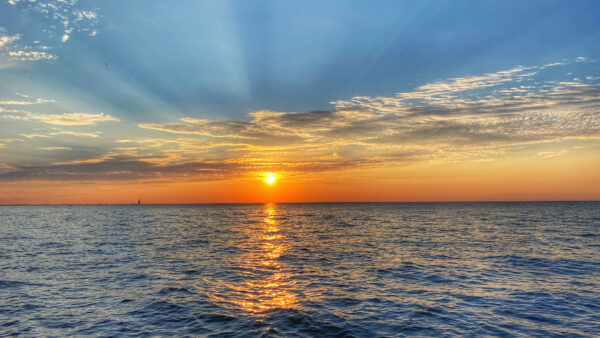
I’ve always been a strong voice for the protection and responsible management of our natural resources.
It’s one of the reasons I sought elective office.
And my position as a Pennsylvania state senator has given me the opportunity to represent our state on the Great Lakes-St. Lawrence Legislative Caucus (GLLC) Executive Committee. I will work with the other members of the committee to ensure our Great Lakes resources are protected now and for future generations.
As an Erie native, I know how important the Great Lakes are to the regions that are fortunate enough to border them – they provide our communities with a distinctive historical, economic and cultural identity. For us in Erie County, Lake Erie offers all those things, and we should seek to safeguard this natural resource so it can continue to do so.
We need to be very careful with how we manage Lake Erie.
That includes the recent announcement that a portion of Lake Erie is under consideration to be designated as a National Marine Sanctuary.
These sanctuaries are designated by the federal government with the goal of protecting areas of the marine environment with special national significance due to their conservation, recreational, ecological, historical, scientific, cultural, archeological, educational or esthetic qualities.
According to the National Oceanic and Atmospheric Administration (NOAA), which oversees the National Marine Sanctuary System, the proposed Lake Erie Quadrangle National Marine Sanctuary would encompass approximately 740 square miles of Pennsylvania’s Lake Erie waters, from the shoreline to the Canadian border. The stated purpose is to protect our region’s maritime heritage resources, including a nationally significant collection of shipwrecks.
The approximately 75 miles of proposed sanctuary shoreline along Erie County contain six townships, two boroughs, and the city of Erie.
That’s a sizable area to fall under additional government regulation.
The nomination proposes to exclude the Port of Erie from the sanctuary boundaries to ensure compatible use with shipping and other commercial activities.
While that’s good news, there remain concerns about how private property owners could be affected by shoreline boundaries, the effects of a new layer of rules and permitting, the impact on commercial navigation and what could happen in the future. With a requirement that sanctuary management plans be reviewed, and potentially revised, every five years, some of the existing 15 national marine sanctuaries have seen efforts to change the rules and regulations from what they were when the sanctuaries were created.
Once regulatory authority has been given to the federal government, we at the local level will have a limited voice regarding how a sanctuary along our coast will be managed. A recent example of regulatory overreach in our area has played out at the North East Marina. What went from a simple dredging permit costing roughly $15,000 to dredge and put the sand back into Lake Erie now involves taking all the dredge sand to the landfill at a cost of $500,000. This red tape has directly influenced the PA Fish & Boat Commission to recently announce plans to eventually close the marina.
As Pennsylvania continues to discuss the importance of renewable energy options, such as off-shore wind turbines, the restrictions and limitations for development in the Lake Erie Marine Sanctuary remains unclear.
The public comment period runs through July 18, after which NOAA’s Office of National Marine Sanctuaries will make a final decision and prepare final documents. Those documents will be submitted for review to the U.S. Congress and the Governor of Pennsylvania.
We need to be sure the sanctuary designation will complement, not conflict with, what we’ve been doing to preserve the region’s importance, including the many historic shipwrecks and our other underwater cultural resources, while promoting local tourism, recreation, and economic opportunities.
I urge all interested parties to give this proposal the careful consideration it demands. I also feel there needs to be more public input and more time given to assess the potential downside to this designation. When something sounds too good to be true, it usually is.


